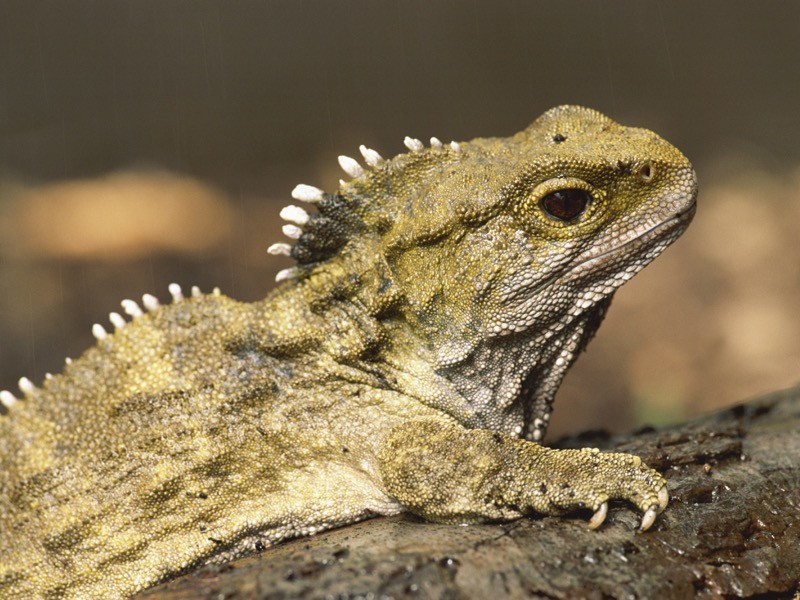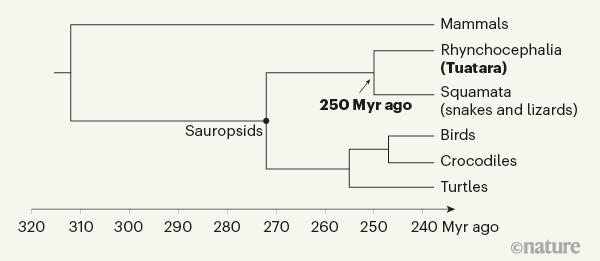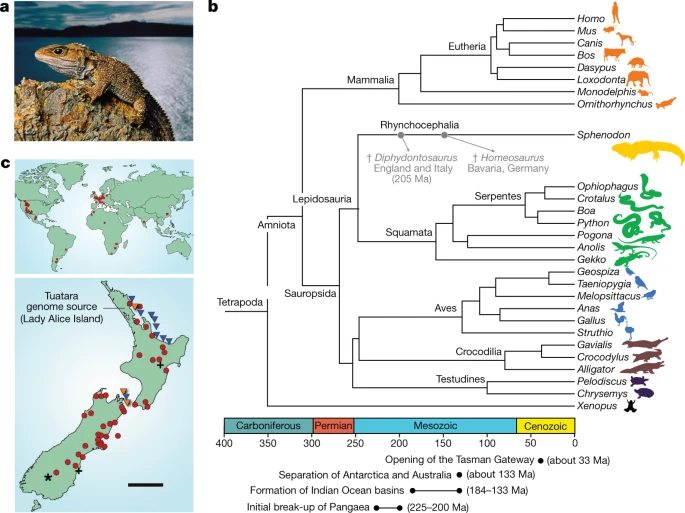Tuatara Genome Revealed
A correspondent has brought THIS ARTICLE to my notice. It tells of how the genetic material of the tuatara was collected, in collaboration with the iconic species Maori guardians. Without their cooperation the material could not have been gathered.
The genome is 50% larger than the human genome and is one of the largest ever published. One purpose was to reconstruct the creatures evolutionary tree.
 |
| A tuatara in New Zealand. Credit: Pete Oxford/NPL |
And here is its evolutionary tree - the simple version.
 |
| Refining the evolutionary tree for reptiles, birds and mammals. This phylogenetic tree includes six branches: mammals and five branches within a clade called sauropsids, which comprises reptiles and birds. One of these, the Rhynchocephalia, has only one living member, the tuatara. Gemmell and colleagues date the divergence of the Rhynchocephalia from the Squamata to about 250 million years (Myr) ago |
 |
| a, The tuatara, (S. punctatus) is the sole survivor of the order Rhynchocephalia. b, c, The rhynchocephalians appear to have originated in the early Mesozoic period (about 250–240 million years ago (Ma)) and were common, speciose and globally distributed for much of that era. The geographical range of the rhynchocephalians progressively contracted after the Early Jurassic epoch (about 200–175 Ma); the most recent fossil record outside of New Zealand is from Argentina in the Late Cretaceous epoch (about 70 Ma). c, The last bastions of the rhynchocephalians are 32 islands off the coast of New Zealand, which have recently been augmented by the establishment of about 10 new island or mainland sanctuary populations using translocations. The current global population is estimated to be around 100,000 individuals. Rhynchocephalian and tuatara fossil localities are redrawn and adapted from ref. 1 with permission, and incorporate data from ref. 2. In the global distribution map (c, top); triangle = Triassic; square = Jurassic; circle = Cretaceous; and diamond = Palaeocene. In the map of the New Zealand distribution (c, bottom); asterisk = Miocene; cross = Pleistocene; circle = Holocene; blue triangle = extant population; and orange triangle = population investigated in this study. Scale bar, 200 km. Photograph credit, F. Lanting. |
The papers are interesting as they give an insight into modern biology.



No comments:
Post a Comment